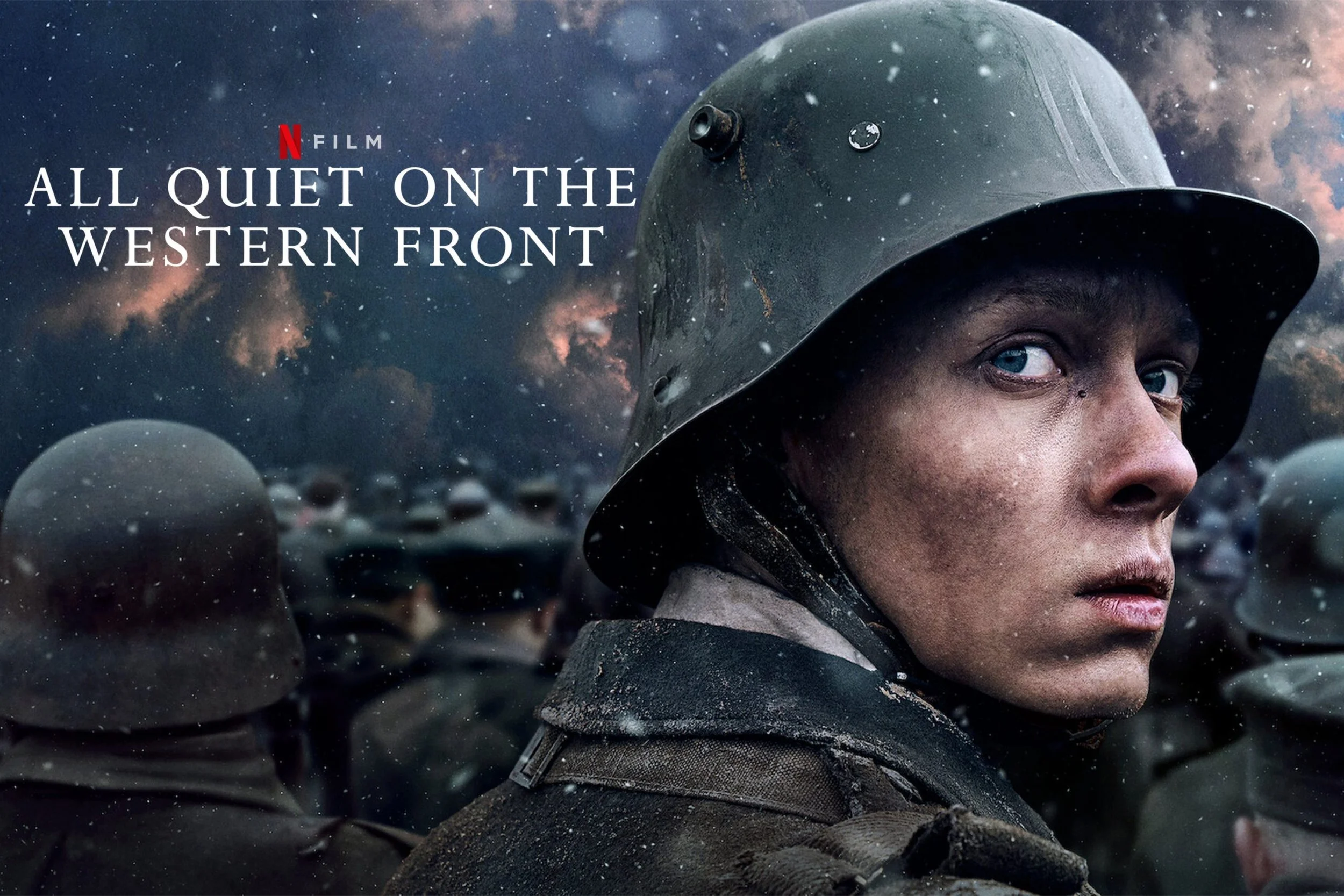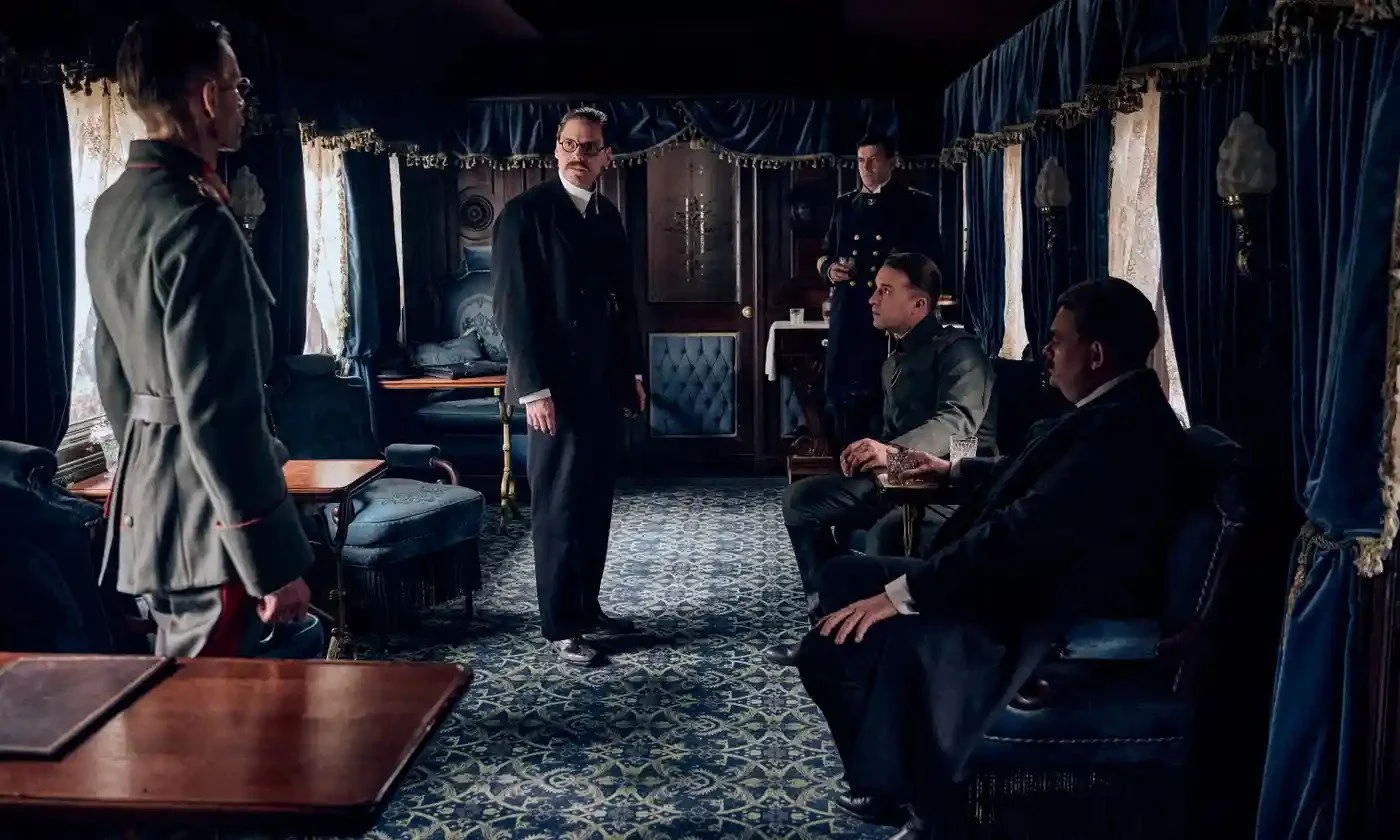Review: All Quiet on the Western Front & the Modern War Film
The War Movie. The war movie has always been a revered medium, one of the most iconic genres in film. From Inglorious Basterds( 2009) to Apocalypse Now (2001), time and time again we see the genre reinvented, with each director putting a new spin on what a war movie should accomplish. Most war films include an anti-war message, but there are many directions to take that sentiment.
Despite being a remake, All Quiet on the Western Front (2022) takes these core motives in a new direction, committing more to the “Single Story” concept than most films before. All Quiet dedicates itself to the protagonist, limiting time spent on other characters or conflicts. Large-scale battle scenes, tension-building silence, depiction of the “other,” and allocation of screen time are all tools that All Quiet uses to great effect.
All Quiet opens with a bang. No context, no background; we follow a soldier who loses his life gruesomely in the trenches. Immediately All Quiet introduces the audience to its perspective on the large-scale battle scene. In line with the famous starting scene of Saving Private Ryan, the audience follows a soldier in the midst of death and destruction. All Quiet differentiates itself by leaving the camera on the soldier the entire scene.
There are no cuts to another soldier’s frightened face or wide shots of the whole fight. We never even see the enemy trenches or what our soldier is working his way towards. I found this technique more stressful than a traditional approach. By leaving the enemy trench out of frame, we focus on the protagonist, not on what is happening elsewhere.
This reflects the soldier’s goal.
He does not care about the result of the battle; he simply wants to survive.
Another recent war film, Dunkirk (2017), emphasizes the quiet moments before the violence begins. Director Christopher Nolan spent much of his time preparing these extravagant fight scenes with hundreds of extras, only to have them stand silently for most of the scene. His philosophy was that the most riveting moment of war is right before the fighting commences, not once the shells are already falling.
All Quiet uses a slightly different approach, where the audience is distracted by a menial action, and then pandemonium breaks out. Several times the audience will spend ample time with the soldiers in the trenches, observing a casual conversation or a meal, and then chaos will break out without warning.
This approach was particularly insightful to the perspective of the soldiers. For them, moments of peace immediately precede battle. Soldiers get no notice; they must be ready to lay down their lives in an instant.
In the second third of All Quiet, our protagonist finds himself in a ditch with a French soldier. After wrestling with him for several minutes, the protagonist prevails, stabbing the French soldier in the chest several times. The next 5 minutes consist of a heart-wrenching attempt by the protagonist to save the enemy soldier, as he realizes they are not so different. It is not a novel concept to humanize the “enemy” in a war film, but All Quiet commits to it.
This is one long, gruesome scene where empathy prevails, but it is meaningless in the face of war. The death of this enemy soldier is given even greater emphasis than the deaths of some of our protagonist’s party members. I have to shout out Felix Krammerer for this scene, as it is one of the rawest performances I’v seen recently. I find myself still able to picture the look on his face as he realized he could not save the Frenchman, and it encapsulated everything a war movie should make a viewer feel.
At the extreme end of the screen time spectrum is 1927 (2019). The film seemingly unfolds in a single take, its camera staying with two soldiers. I think 1917 loses a sense of scope by sticking so closely to its protagonists. All Quiet keeps the viewer engaged in the greater context of the war by including a B-plot of German and French negotiators. Removing the viewer from the action at certain points eases the pressure on the main story and provides context for the battles.
The most effective use of this technique overlaps the treaty’s signing with the final battle scenes. By agreeing to end the war at 11 AM on the day of the final fight directly before the fight happens, the audience gains extra insight into the futility of the violence. I watched the final scene in anticipation of the war’s end, expecting the clock to strike 11 at any moment. But before we get there, our hero’s journey ends. Only after the killing blow is dealt do the horns ring out to signal the end of the war.




